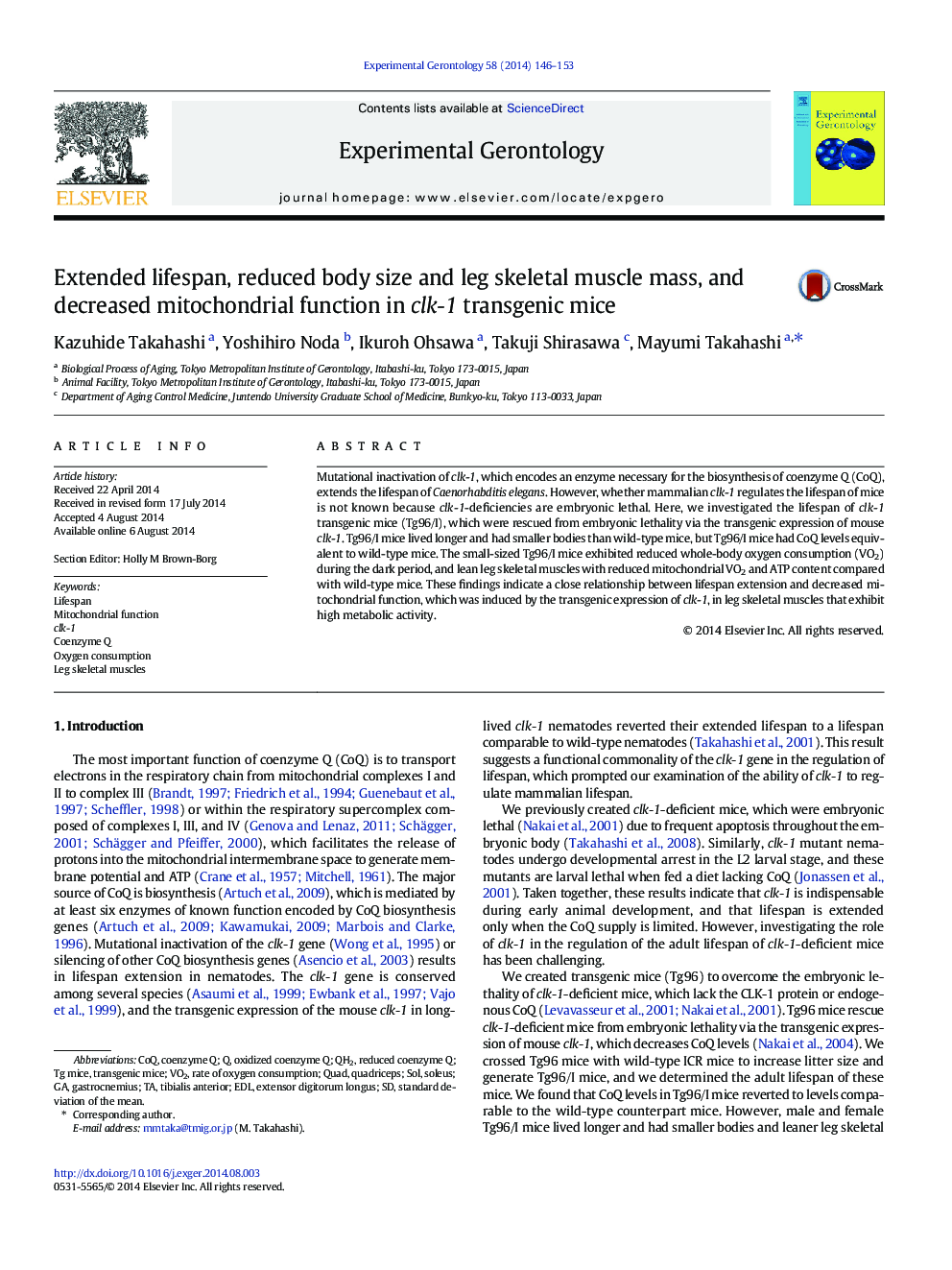| Article ID | Journal | Published Year | Pages | File Type |
|---|---|---|---|---|
| 1906269 | Experimental Gerontology | 2014 | 8 Pages |
•clk-1-deficient transgenic (Tg96/I) mice have small bodies and long lifespans.•Coenzyme Q levels in Tg96/I mice are comparable to those in wild-type mice.•Tg96/I mice have reduced whole-body oxygen consumption.•Tg96/I mice have lean leg muscles with reduced mitochondrial function.
Mutational inactivation of clk-1, which encodes an enzyme necessary for the biosynthesis of coenzyme Q (CoQ), extends the lifespan of Caenorhabditis elegans. However, whether mammalian clk-1 regulates the lifespan of mice is not known because clk-1-deficiencies are embryonic lethal. Here, we investigated the lifespan of clk-1 transgenic mice (Tg96/I), which were rescued from embryonic lethality via the transgenic expression of mouse clk-1. Tg96/I mice lived longer and had smaller bodies than wild-type mice, but Tg96/I mice had CoQ levels equivalent to wild-type mice. The small-sized Tg96/I mice exhibited reduced whole-body oxygen consumption (VO2) during the dark period, and lean leg skeletal muscles with reduced mitochondrial VO2 and ATP content compared with wild-type mice. These findings indicate a close relationship between lifespan extension and decreased mitochondrial function, which was induced by the transgenic expression of clk-1, in leg skeletal muscles that exhibit high metabolic activity.
